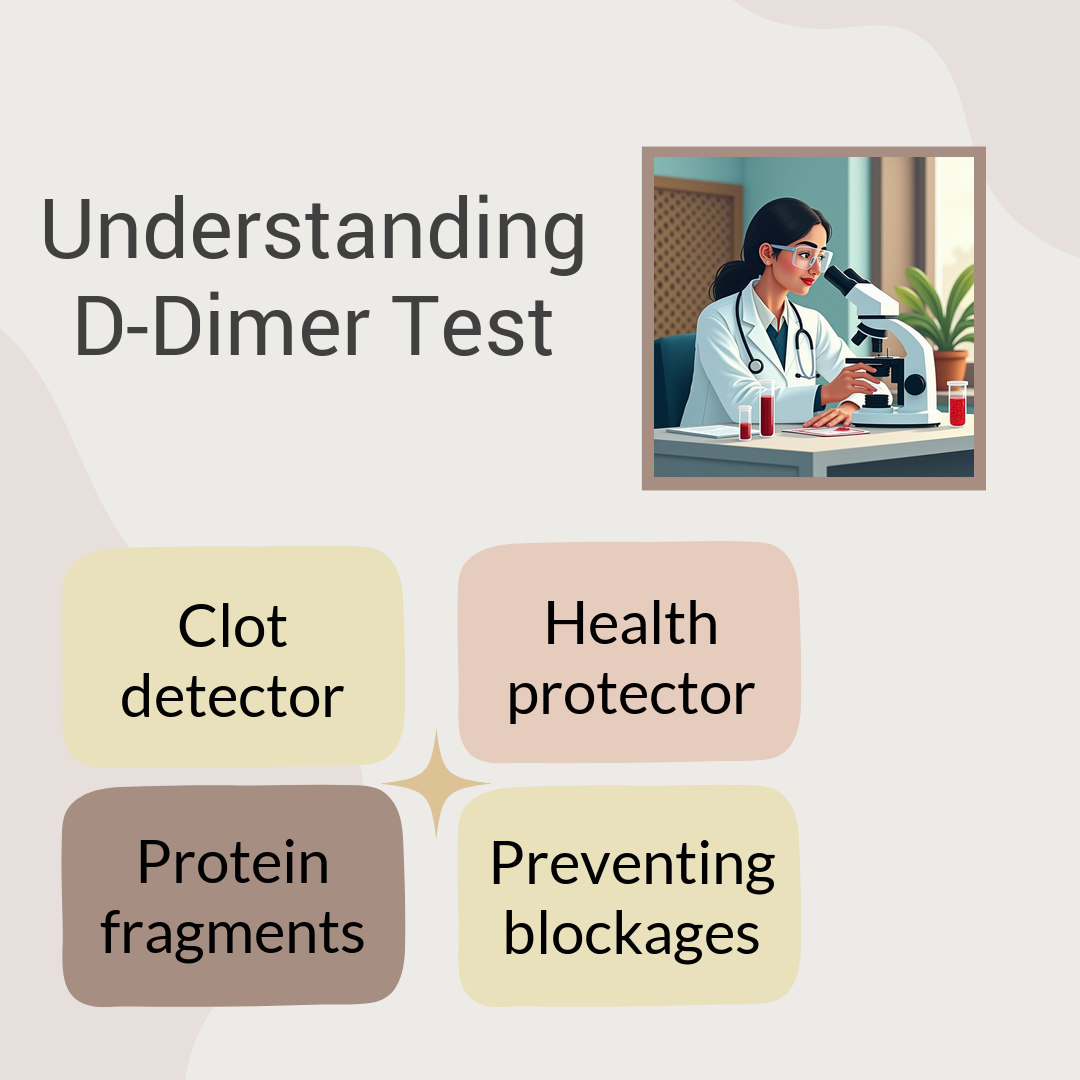Your body manages injuries with a clotting process so you don’t lose too much blood. After the injury heals, these blood clots are supposed to dissolve themselves naturally. Sometimes, clots persist or form unnecessarily, potentially leading to complications. The D-Dimer test helps spot if these blood clots are not breaking down properly in your system. A high D-Dimer level could mean there are problematic clots in your body forming unnecessarily.
Doctors often use the test when they suspect deep vein thrombosis (DVT) or pulmonary embolism (PE). DVT occurs when a blood clot forms in a deep vein, usually in the leg, causing pain and swelling. When such a clot travels to the lungs, it becomes a pulmonary embolism, which can be life-threatening. Additionally, this test can help diagnose certain heart-related problems because improper clot formation can impact heart health. By catching these signs early on through testing, treatment can begin sooner to avoid major complications.
The Purpose and Functionality of the D-Dimer Test
The D-Dimer test checks if blood clots are forming normally. It works like an alert system, showing if clots form inappropriately. When D-Dimer levels rise, it signals potential blood clot issues. This alerts doctors to investigate further and decide on the treatment steps.
Elevated levels of D-Dimer indicate a possible problem with the blood clotting process. These higher readings can act as warning signs for conditions like deep vein thrombosis or pulmonary embolism. Doctors often use these warnings to decide on extra tests or new treatments as needed.
During surgeries or after major injuries, the D-Dimer test plays an important role. It helps monitor clot formation to make sure they are not harmful post-operation. Even infections can trigger clotting risks, so this test aids in preventing complications and ensuring a smooth recovery.
When a clot-related condition is identified, ongoing monitoring of D-Dimer levels becomes crucial. Doctors check these levels to assess the effectiveness of given treatments or medicines. Adjustments to care plans might be made based on these results, helping prevent further issues and ensuring successful patient recovery.
How the D-Dimer Blood Test is Conducted
Getting a D-Dimer blood test is simple and quick. 1. Registration: You start by signing in at the clinic or hospital. 2. Preparation: They clean your arm’s skin with an antiseptic swab. 3. Drawing Blood: A needle takes blood from a vein in your arm. 4. Sample Collection: The blood goes into a small collection tube. 5. Closure: Afterwards, a bandage covers the spot to prevent bleeding.
Before taking a D-Dimer test, you should know there’s little to do first. It’s generally not necessary to fast before this test. Wearing loose clothes helps ease the process of accessing your arm. The test is quick, lasting only a few minutes usually. Most feel only mild soreness, or notice slight bruising near where the needle goes in. But it clears up quickly on its own.
The D-Dimer test is both common and widely available locally. Many clinics and hospitals include it in regular diagnostic services provided. Checking with your local healthcare provider ensures availability and appointment details.
Some fret that the D-Dimer test is painful or difficult to understand. It ranks among the simpler tests they’ll perform for diagnostics. Another untrue assumption is that a high D-Dimer signals severe health issues right away. Various factors can elevate levels, like recent surgeries or inflammations in the body. High results should not be taken lightly but are usually not urgent signs on their own.
Understanding D-Dimer Testing Costs and Factors in India
The cost of a D-Dimer test in India can vary quite a bit. Generally, it ranges from INR 500 to INR 1,500 depending on the region. In cities, you might pay more than in small towns or rural areas. Private hospitals are likely to be more expensive than government ones due to their quality and speed.
Many factors can affect the pricing of a D-Dimer test across different places. The location of the lab or hospital significantly changes the costs involved for patients. Whether the facility is government-owned or privately-run also determines how much you might pay. Some places offer package deals, allowing you to save when needing multiple tests.
If you’re looking to save on costs, try these approaches:
- Compare Prices: Check what different labs and hospitals are charging.
- Use Health Insurance: Insurance may cover some or all diagnostic tests.
- Ask About Packages: Labs might have bundled services that offer savings.
- Consult Health Providers: Discuss options with your doctor to keep costs down but care high. These tips can help understand pricing better and save money on medical expenses.
Interpreting D-Dimer Test Results and Normal Reference Ranges
D-Dimer is a fragment found in blood when clots break down. Usually, the normal range for D-Dimer levels is below 0.5 micrograms per milliliter. Having low levels is standard in healthy people without clotting concerns.
Doctors check D-Dimer to assess if its levels are above the norm. Elevation might point to serious clotting issues occurring within the body. Levels that exceed 3.0 micrograms per milliliter are generally concerning and need further checking.
Abnormal D-Dimer results might indicate dangerous clotting, potentially leading to blocked vessels. To confirm these results, doctors may order scans or ultrasounds to locate possible clots. Continual monitoring helps understand any evolving clotting activity.
Further testing could be necessary if initial D-Dimer readings remain high over time. These follow-up tests are vital for monitoring risks and guiding future treatments. For those on blood thinners or with past clotting issues, regular checks become part of ongoing care.
Critical Conditions Associated with High D-Dimer Levels
Issues with high D-Dimer levels might point to several health problems. Deep vein thrombosis (DVT) forms when blood clots occur in deep veins, often in legs. A pulmonary embolism (PE) happens when clots block arteries in the lungs. Elevated D-Dimer levels can also indicate conditions like clotting and infections.
Symptoms such as swelling, sharp pain, or tenderness in limbs might cause concern. Sudden difficulty breathing or unexplained cough might prompt a D-Dimer test. Chest pain should never be ignored and needs immediate medical attention. A D-Dimer test helps check if these issues stem from clotting.
Addressing high D-Dimer levels means strictly following medical advice. Treatment may involve taking medications to stop more clotting happening. Making lifestyle changes like regular moving and better diets really help improve health. Routine checkups are vital to ensure your treatment is on track.
Conclusion and Key Takeaways on the D-Dimer Test
Understanding what the D-Dimer test means can be quite helpful. This test checks the presence of blood clot fragments in your blood. It plays a crucial role in identifying issues like DVT and PE early on.
It’s always wise to talk with healthcare providers about any blood clot concerns. They know best what the test results mean for your health needs. Through their guidance, you can plan better ways to manage or prevent potential problems.
Keep incorporating the D-Dimer test into regular check-ups for a health boost. It offers valuable insights into clotting activity, helping you take action before bigger issues arise.


